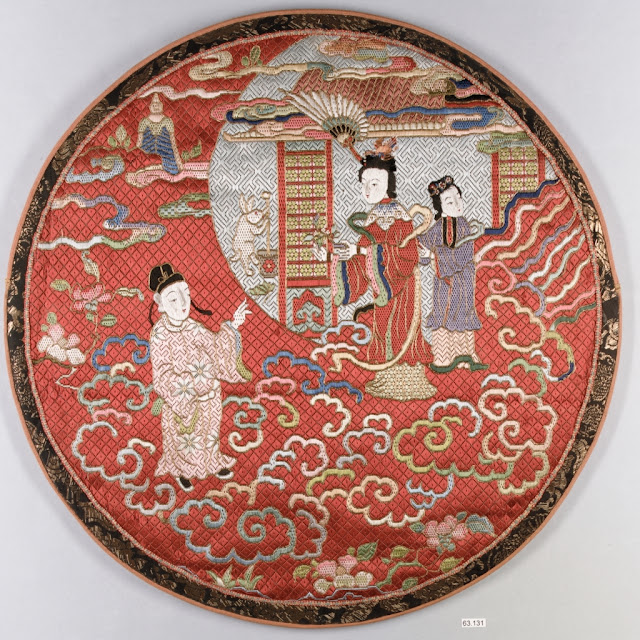Mirror Case with Lunar Scene, Qing dynasty, 19th century. Embroidered silk gauze. The Metropolitan Museum of Art
Embroiery in China has a long history dating back to the invention of silk four thousand years ago. It is known that the ceremonial garments of the tribal leaders of that time were decorated with embroidered patterns of the sun, the moon, stars, weed, fire and other auspicious symbols. To date the earliest survived embroidery works are the two 4th century BC pieces unearthed from the Chu Tombs. The patterns of dragon, phoenix, tiger and beast embroidered on silk appear natural and lifelike which gives full credit to the achivements of embroidery art in the ancient China.
The art of embroidery further developed during Qin and Han dynasties. Embroideries of that time represent the artistic style as well as the high level of embroidery and mostly have patterns of ripple-like clouds, soaring phoenix, galloping holy beasts, ribbon-shaped flowers, geometric figures etc, using basically locking method with neat stitching, compact compostion and smooth lines.
